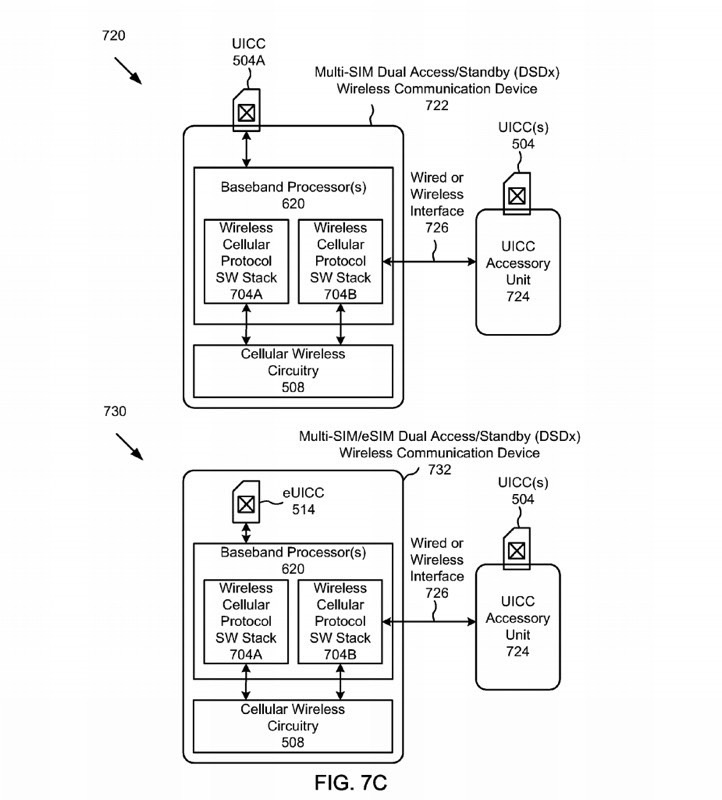If there’s one smartphone maker known for its unwillingness to make a dual-SIM version of its best-selling smartphone, it’s Apple. But the iPhone 8, a device expected to deliver many firsts for Apple, might also be the first iPhone in Apple’s history to support two SIM cards… or even more. That would certainly be an incentive to buy the iPhone 8 for smartphone buyers who require constant access to at least two different phone numbers, and who don’t want to carry multiple devices.
Apple has yet to announce any iPhone 8 features, but it does have official documentation that proves the company’s growing interest in mobile devices that could support more than one SIM card. And make no mistake, the iPhone would be at the top of the list of Apple products that could use such functionality. The Apple Watch might also be included on that list.
But what’s interesting about Apple’s approach — and what may explain why we don’t have a dual-SIM iPhone right now — is that Apple isn’t necessarily looking to using two physical SIM cards inside its multi-SIM gadgets.
For years, we’ve heard that Apple wants to replace the regular SIM card with an eSIM that would help it not only save precious internal space, but also improve water resistance. Carriers, however, are an obstacle in Apple’s eSIM’s dreams. Now, new patent applications from last year have been recently published by the United States Patent and Trademark Office, revealing Apple’s renewed interest in smart SIM cards.
For example, there’s patent application number 20170099285 titled Methods and apparatus to support Global Platform usage on an embedded UICC (eUICC), which was published a few days ago. Let’s clarify some of that legalese speak using Apple’s own words:
Most wireless communication devices (e.g., smart phones) are configured to utilize Universal Integrated Circuit Cards (UICCs) that provide access to wireless network services. A UICC typically takes the form of a small removable card (e.g., a Subscriber Identity Module (SIM) card) that is inserted into a wireless communication device. In most cases, each UICC is associated with a single “Issuer”–such as a mobile network operator–that controls the programming and distribution of the UICC. A popular standard, known as the GlobalPlatform.TM. specification has been adopted by a majority of mobile network operators and facilitates secure and interoperable management of applications on UICCs.
In more recent implementations, non-removable UICCs–referred to herein as embedded UICCs (eUICCs)–are being included on system boards of wireless communication devices. These eUICCs are distinct from the traditional removable UICCs in that the eUICCs are non-removable and soldered to the system boards of wireless communication devices. In order to transition from use of a UICC to an eUICC in a wireless communication device, software embedded in the UICC may need to be completely re-written/re-programmed with new functions and/or applications in order to accommodate this significant change in hardware configuration, which can prove costly and time consuming. Thus, there exists a need for a more streamlined approach to transition from using UICCs to eUICCs.
Apple wants to find an easy way to transition from regular SIM to eSIMs in the future. That’s not to say the iPhone 8 will necessarily have dual-SIM support, just that Apple is looking to fix this problem and potentially convince mobile operators to go along with it.
But then we have patent application 20170094628 from late March, which explains how a dual-SIM or multi-SIM device would work — that’s the Methods and apparatus to support parallel communication for multiple subscriber identities in a wireless communication device patent. In this patent, Apple describes technology that would simplify the behind-the-scenes management of dual-SIM and multi-SIM functionality in Apple devices.
While these wireless communication devices provide for flexible access to different services and to multiple wireless networks, an internal architecture of such wireless communication devices that support the multiple UICCs/SIMs usually includes parallel hardware and parallel software such that each UICC/SIM acts independently with no interaction or interface between them. Although this internal architecture is simple, independent operation of the parallel UICCs/SIMs (and associated hardware/software) in the wireless communication device can result in inefficiencies, as each parallel internal system can duplicate various functions used for network connection management. As such, there exists a need for solutions that enable cooperation and synergy between hardware and software that support multiple subscriber identities in a wireless communication device.
What’s interesting about this patent is that Apple takes into consideration various scenarios where SIM cards and eSIMs would coexist on the same device. Thus, a device like the iPhone 8 could have a SIM tray that would support just one single nanoSIM, but also feature built-in eSIM functionality that would let users add at least one more SIM card to the phone.

The patent application also describes a scenario where two devices, each capable of housing at least one SIM/eSIM, would be able to interact via a wireless protocols such as Wi-Fi or Bluetooth (see the image above). Considering that the Apple Watch Series 3 is expected to come with LTE support, this patent might tell us how LTE management will be handled on the Apple Watch with the help of an iPhone.
That said, there’s nothing to guarantee that the technology described here will be found in upcoming Apple products. However, it’s worth pointing out that the patents were filed on November 16th, 2016 (‘628), and December 19th, 2016 (‘285), suggesting Apple is indeed interested in this type of technology for its upcoming devices.








